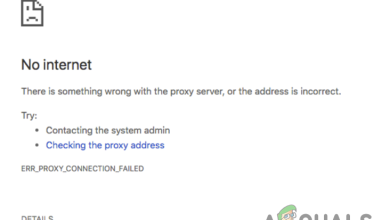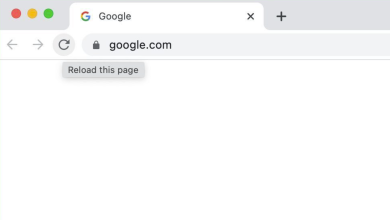What is ERR_HTTP2_PROTOCOL_ERROR? How to Fix it?
HTTP2 protocol error might occur on a client device mainly due to browser issues or interference from the network. Browser’s issues might range from a conflicting extension to a corrupt cache, bad cookies, and the history of the browser.
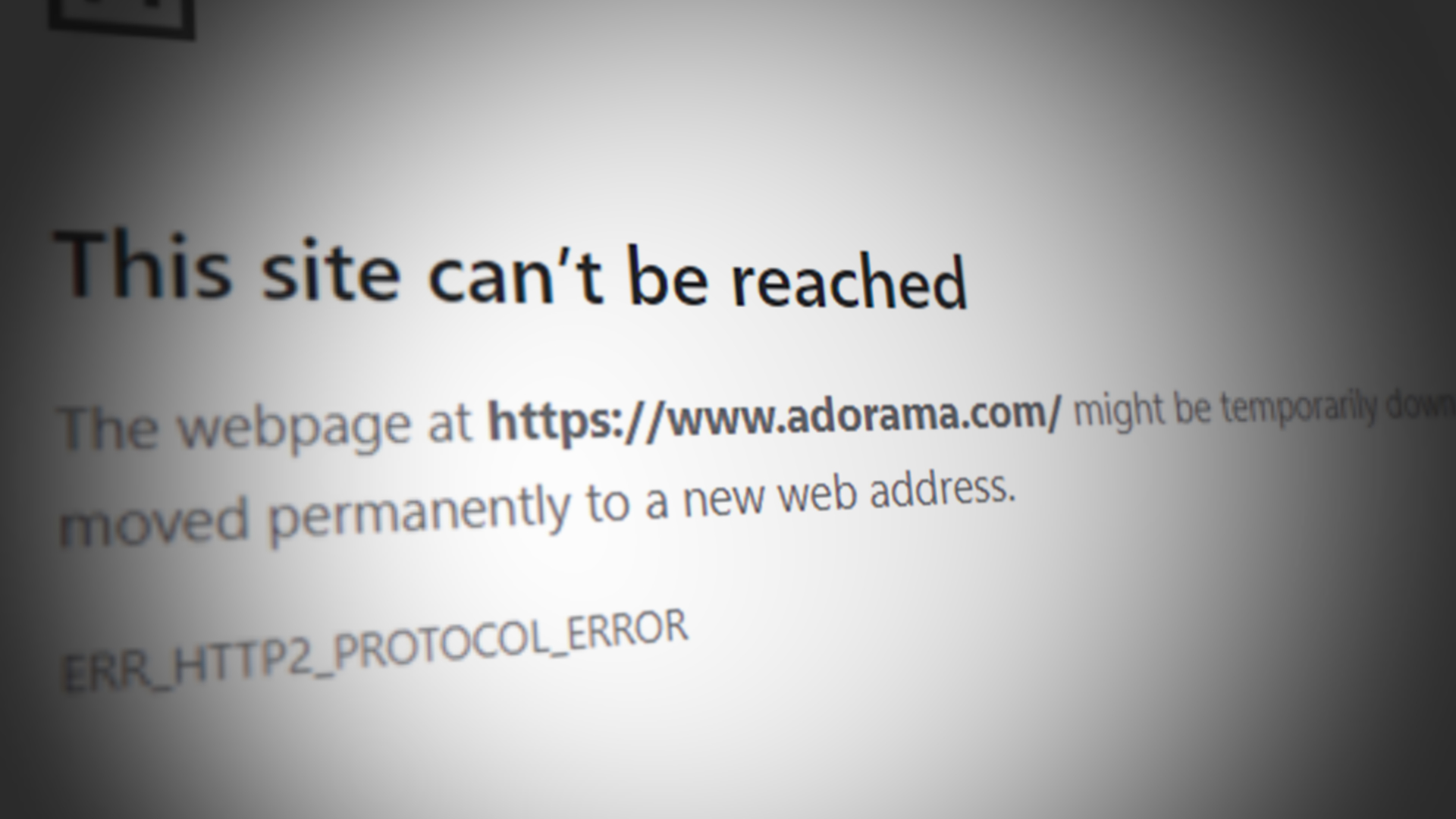
The issue occurs when a client tries to visit a website but fails to do so and the HTTP2 protocol error is shown. In some instances, the issue is only limited to a particular website, whereas, in some other scenarios, none of the browsers on the client device failed to open a majority of websites. The issue is reported on all the famous browsers like Chrome, Firefox, Edge, Opera, etc. This is also common on devices using different operating systems (like Windows, Mac, Linux, iPhone, Android, etc.). The HTTP2 protocol error is also reported on some other applications or games (like Discord).
This is known to occur on both sides i.e., the client and the server. This article is intended to clear the err_http2_protocol_error on the client side, although, there are some steps (like disabling HTTP2 protocol) that may very well work for the server-side as well. Due to the diversity of the server-side issues, it is not possible to cover them in this article.
There can be many reasons for which you may encounter the HTTP 2 protocol error on a client device but we found the following to be the main ones behind the error:
- Outdated Browser or Outdated OS of the Device: If your browser installation is outdated or the device’s OS is outdated, then the incompatibility of the browser or the device with the problematic website can cause the HTTP 2 error as the website may fail to parse the incompatible data packets from the client device.
- Conflicting Browser Extensions: You may encounter the HTTP2 protocol error if a browser extension is interfering with the client’s communication with the problematic website server and is not letting the website load properly on the client-side.
- System or Network’s Security Product: The err_http2_protocol_error might occur if your security product (system or network) is limiting the client’s access to the problematic web server and as a result, the server refuses the connection with the error under discussion.
- Corrupt Cache, Cookies, or History of the Browser: If the browser’ cookies, cache or history is corrupt, then the data packets sent as a request by the client may fail to authenticate the legitimacy of the device and the server may refuse the connection with the err_http2_protocol_error.
1. Update the Browser to the Latest Build
If the browser in use is outdated, then its incompatibility with websites can cause the HTTP2 protocol error as the website may actively refuse the client request due to the incompatible data packets. Here, updating the problematic browser to the latest release may solve the problem.
For illustration, we will discuss the process of updating the Chrome browser on a PC to the latest build. Before proceeding, make sure the issue is not on the server-side by opening the problematic website on another device on a different network.
- Launch the Chrome browser and open its menu by clicking the three vertical ellipses (near the top right).
- Now hover over Help and in the sub-menu shown, click on About Google Chrome.
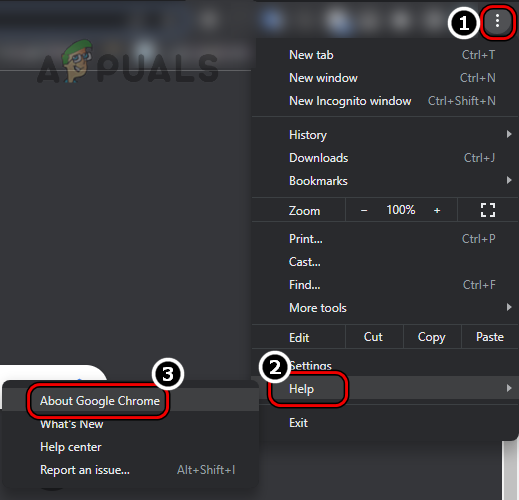
Open About Google Chrome - Then, in the resulting window, make sure the Chrome browser is updated to the latest build, and afterward, click on Relaunch.
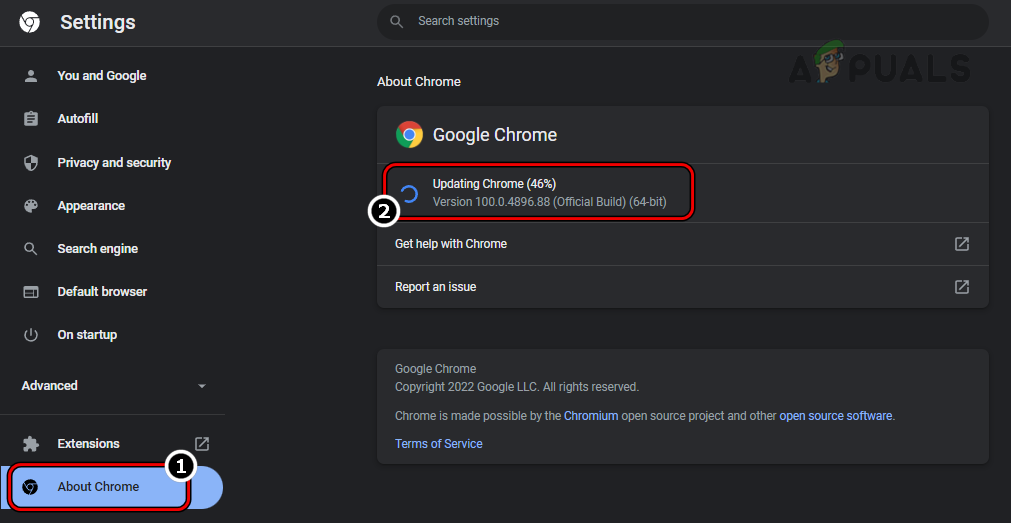
Update Chrome to the Latest Build - Upon relaunch, check if the Chrome browser is clear of the ERR_HTTP2_PROTOCOL_ERROR.
2. Update the OS of the Device to the Latest Build
You may encounter the ERR_HTTP2_PROTOCOL_ERROR if the OS of your device is outdated as it can make the data packets from the device non-compatible on the websites or servers. In this context, updating the OS of your device to the latest build may solve the problem. For elucidation, we will discuss the process for updating a Windows PC to the latest build.
- Click Windows, search for Check for Updates, and click on it.

Open Windows Update - Now, in the update window, click on the button of Check for Updates and if some Windows updates are available, install the updates.
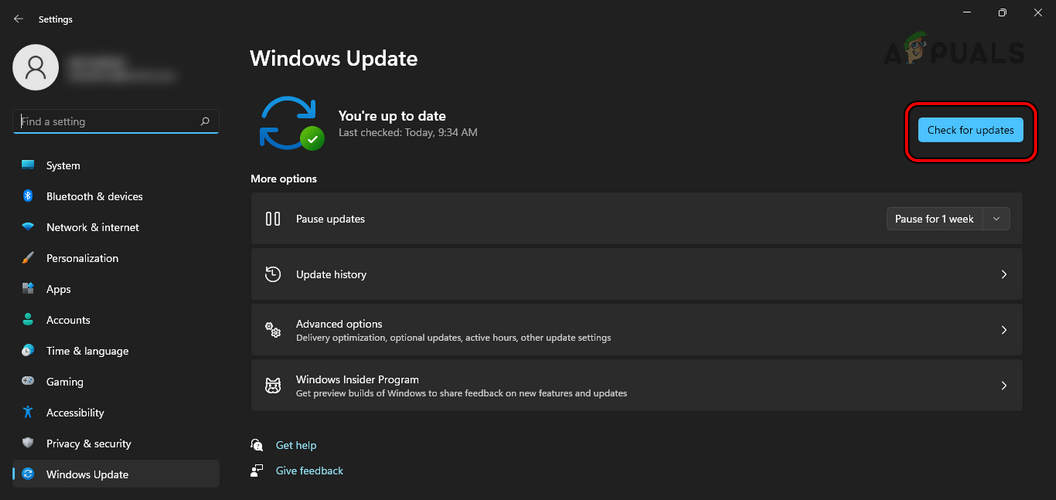
Check for Windows Updates - Once the Windows updates are installed, restart your system and upon restart, check if the err_http2_protocol_error is cleared.
3. Set Correct Date and Time on the Device
If the device’s date and time are not correct, then that could result in the err_http2_protocol_error as well because the wrongly time-stamped data packets may be refused by the host and thus cause the issue. In this scenario, setting the correct date and time on the device may clear the HTTP2 error. For illustration, we will discuss the process of setting the correct date and time on a Windows PC.
- Right-click on the clock in the system tray and select Adjust Date and Time.
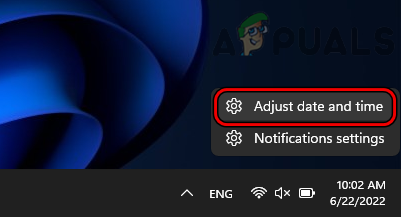
Open Adjust Date & Time Through the System Tray’s Clock - Now, in the Settings window shown, disable Set Time Automatically by toggling its status switch to off, and afterward, set the correct Time Zone in the Time Zone dropdown.

Disable Set Time Automatically, Set the Correct Date & Time, and Click on Change for the Set the Date and Time Manually - Then, click on the Change button located in front of Set the Date and Time Manually.
- Now, the set correct date and time in the menu and click on Change.
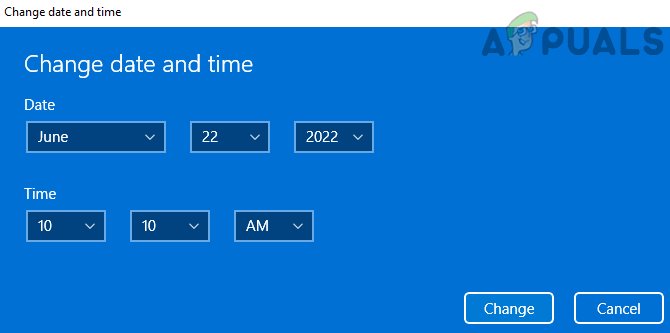
Set the Correct Date and Time on Windows - Then restart your system and upon restart, check if the correct date and time are shown in the system’s tray.
- If so, launch a web browser and steer to the problematic website to check if it can be accessed without triggering the HTTP2 protocol error.
4. Launch the Browser in the Incognito or Private Mode
If any of the browser extensions are hindering the loading of the website or websites or if the browser’s cache/cookies/history is corrupt, then that could result in the error as well. In such a case, launching the browser in its Incognito or Private mode (if you want to access the website once without disabling extensions or clearing cache/cookies) may solve the problem. For illustration, we will discuss the process of launching Google Chrome in the Incognito Mode.
- Launch the Google Chrome browser and expand its menu.
- Now select New Incognito Window and then steer to the problematic website to check if it is working fine.

Open New Incognito Mode in Chrome
5. Disable/Uninstall the Conflicting Browser Extensions
If a browser extension conflicts with the communication between the browser and the problematic website, then that may cause the err_http2_protocol_error as the data packets between the devices are not parsed properly. In this case, disabling/uninstalling the conflicting extensions may solve the problem. For illustration, we will discuss the process for the Akamai Debug Header extension (a reported culprit) on the Chrome browser.
- Launch the Chrome browser and near the address bar, click on the Extensions icon.
- Now select Manage Extensions and disable Akamai Debug Header by toggling its switch to the off position.
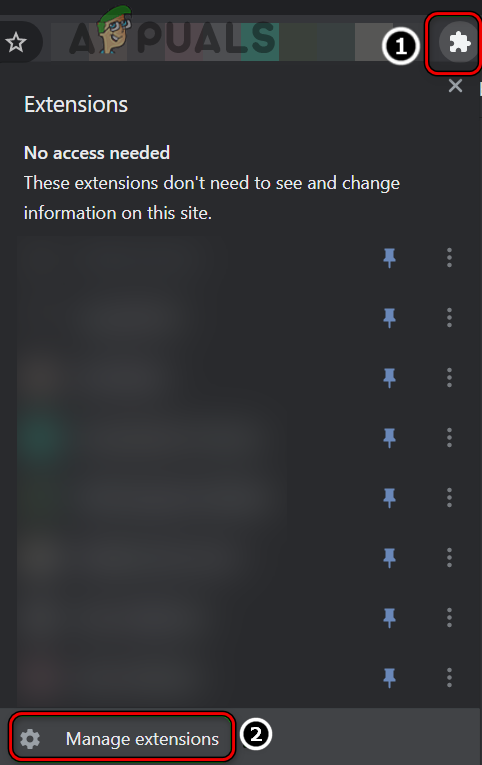
Open Manage Extensions in Chrome - Then relaunch the browser and open the problematic website to check if it is clear of the HTTP2 protocol error.

Disable Akamai Debug Header Extension on Chrome - If that fails, then disable all extensions and check if the issue is resolved.
- If so, then enable back one extension at a time to find out the problematic one. Once found, either keep it disabled or uninstall it (if not essential).
6. Disable the QUIC Protocol of the Browser
If the problematic website is not configured properly to handle traffic from QUIC (Quick UDP Internet Connections) experimental transport layer network, then the incompatibility between the client/server can lead to the HTTP2 error under discussion. Here, disabling the QUIC protocol of the browser may solve the problem. For illustration, we will discuss the process of disabling the QUIC protocol on the Chrome browser.
- Launch the Chrome browser and enter the following in its address bar:
chrome://flags/#enable-quic
- Now find the Experimental QUIC Protocol and set its dropdown to Disabled.

Disable Experimental QUIC Protocol on Chrome - Then relaunch the Chrome browser and afterward, check if the problematic website is loading fine on the browser.
7. Reset the Browser’s Advanced Experimental Settings to Defaults
If you or any of the browser extensions have enabled any of the advanced experimental settings of the browser, then, due to the experimental nature of these settings, the browser may fail to properly communicate with the website and thus show the err_http2_protocol_error. In this case, resetting the browser’s advanced experimental settings to defaults may solve the problem. For illustration, we will go through the process of resetting the flags of the Chrome browser.
- Launch the Chrome browser and enter the following in its address bar:
chrome://flags/
- Now, near the top right, click on Reset All and then relaunch the browser to check if it is clear of the HTTP2 Protocol error.
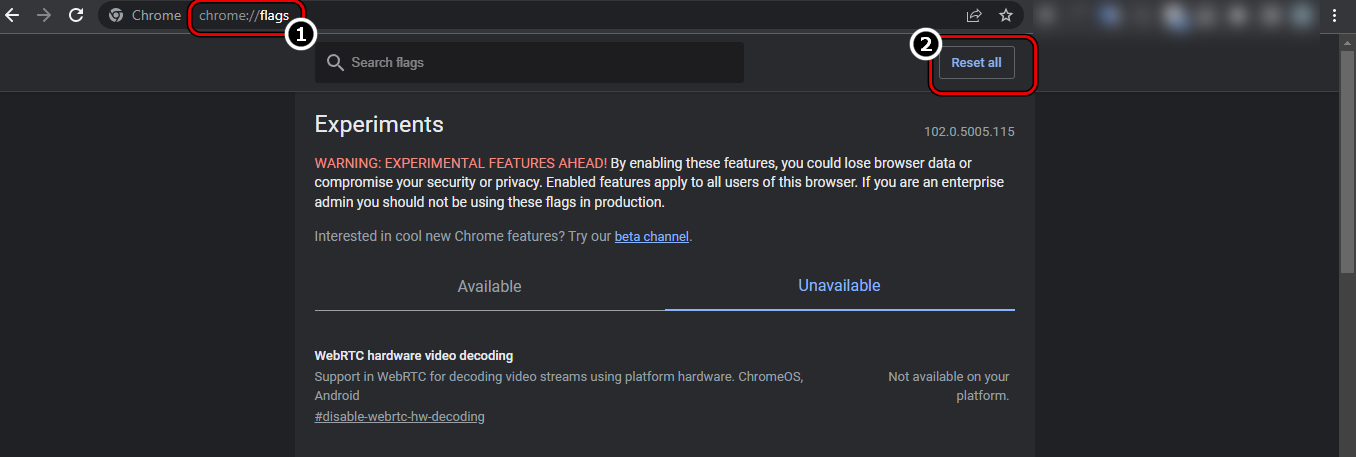
Reset All Chrome Flags to the Defaults
8. Disable the Browser’s Enhanced Security for the Problematic Website
You may encounter the HTTP2 protocol error if the browser’s advanced security is enabled as it can sometimes break the browser’s ability to send parse-able data packets to the server and thus cause the issue. In this scenario, disabling the browser’s enhanced security for the problematic website may solve the problem. For illustration, we will discuss the process of disabling Enhanced Security on the Edge browser.
Warning:
You may try this step at your own risk as disabling the enhanced security of a web browser may expose your browser, system, network, and data to threats.
- Launch the Edge browser and head to the problematic website.
- Now, when the error is shown, click on Added Security (near the address bar) and select Enhance Security for This Website.
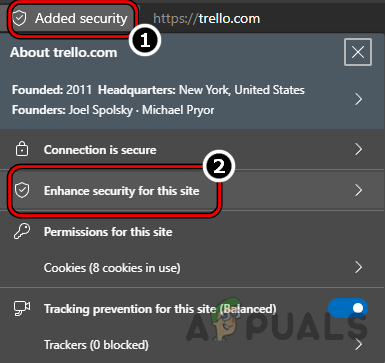
Open Enhance Security for This Website on the Edge Browser - Then disable Use Enhance Security for This Website by toggling its status switch to the off position.
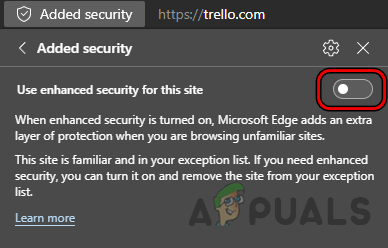
Disable Use Enhanced Security for This Site - Now relaunch the browser and check if the problematic website can be opened without triggering an HTTP 2 error.
- If the issue is not limited to a single website but is occurring on many websites, launch the Edge browser and near the top right, click on the three horizontal ellipses to open the Edge menu.
- Now, select Settings, and in the resulting window, click on the hamburger icon (near the top left).

Open Settings of the Edge Browser - Then open Privacy, Search, and Services and scroll down to the Enhance Your Security on the Web section.
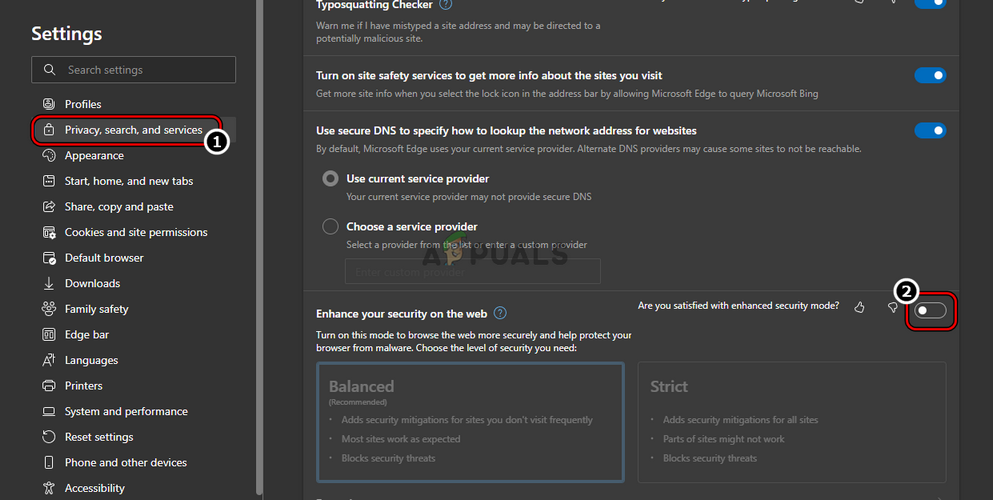
Disable Enhance Security on the Web of the Edge Browser - Now disable Enhance Your Security on the Web by toggling its status switch to the off position (if you cannot disable this setting, then your corporation manages this and you may contact your organization’s IT manager to resolve the issue) and afterward, check if the websites’ HTTP 2 problem is solved.
9. Try in a New Browser Profile
If your current browser profile is corrupt, then that may result in the err_http2_protocol_error as it can create corrupt headers of the data packets on your device that may not be properly parsed on the server-side. Here, trying a new browser profile may solve the problem. For elucidation, we will discuss the process of creating a new user profile for the Chrome browser.
- Launch the Chrome browser and near the top right, click on your user profile icon (besides the three vertical ellipses).
- Now click on Add and select Continue without an Account.

Add a New User Profile to the Chrome Browser - Then enter the name of the new profile (like Test) and click on Done.

Create a New Chrome Profile Without an Account - Now, in the new user profile window, check if the problematic website is opening fine.
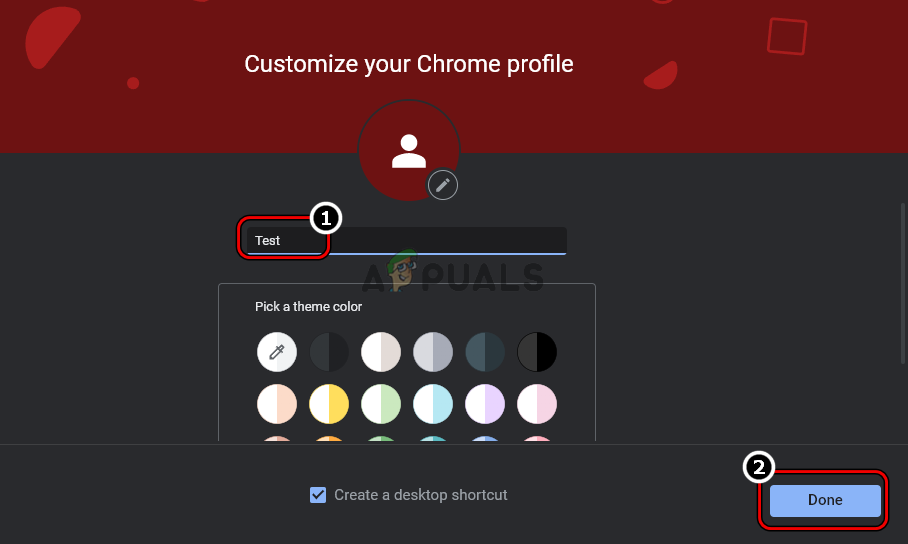
Enter the Name of the New Chrome Profile and Click Done
10. Clear the Browser’s Cache, Cookies, and History
The err_http2_protocol_error might occur if the browser’s cache, cookies, and history are corrupt as the essential website modules fail to load on the client device. In this scenario, clearing the browser’s cache, cookies and history may solve the problem. For illustration, we will discuss the process for clearing the cache, cookies, and history of the Chrome browser. Before proceeding, make sure to note down websites’ logins.
- Launch the Chrome browser and head to the problematic website (like Trello).
- Now, in the address bar, click on the padlock icon and select Cookies.

Open Trello Cookies Settings on Chrome - Then select a cookie and click on Remove.
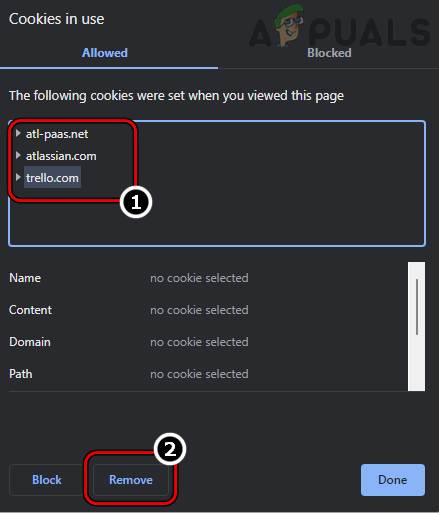
Remove Trello Cookies from Chrome - Now repeat the same with all other cookies and afterward, relaunch the browser.
- Then head to the problematic website and check if the issue was resolved.
- If not, relaunch the Chrome browser and expand its menu.
- Now click on More Tools and select Clear Browsing Data.
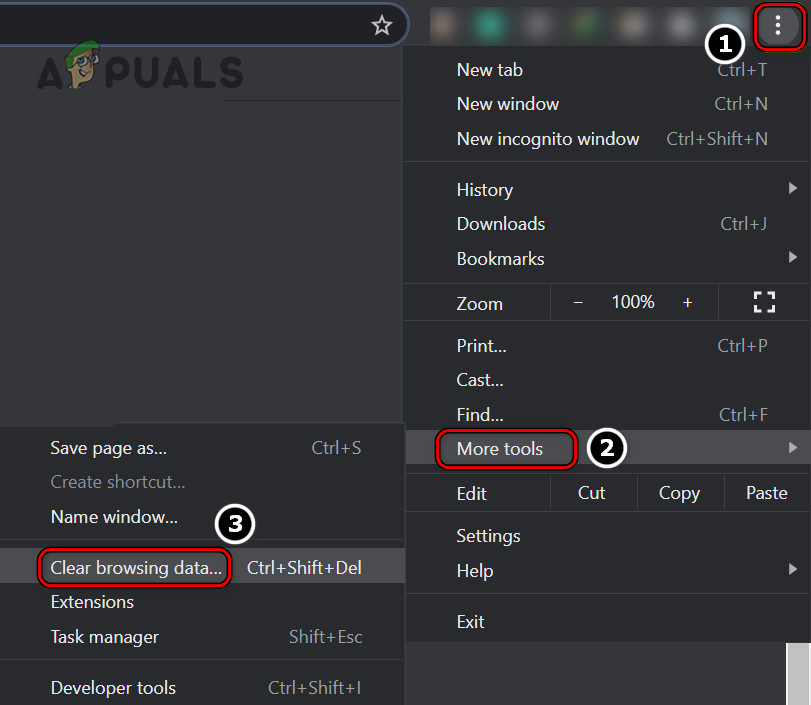
Open Clear Browsing Data in the Chrome Menu - Then, near the bottom of the menu shown, click on Sign Out, and afterward, switch to the Advanced tab.
- Now select the Time-Range of All-Time and checkmark the checkboxes of all the categories.
- Then click on Clear Data and once done, relaunch the browser and check if the HTTP2 protocol issue is resolved.

Clear Browsing Data of All Time in Chrome
11. Try Another Browser
Not all browsers are created equal and if a particular browser is not compatible with a feature used by a particular website or the browser is strict on a misconfigured website feature, then that may result in the err_http2_protocol_error. In this context, trying another browser (which is a bit lenient on the standards) may solve the problem.
- Download and install another browser on your device (if another browser is already not present). If the issue is occurring with a chromium-based browser, then it will be better to install a non-chromium browser (like Firefox).
- Now launch the other browser and check if that can open the problematic website without showing the err_http2_protocol_error.
12. Try Another Network or Use a VPN
The HTTP 2 protocol error might occur if your network is hindering the web traffic between your device and the problematic web server in a way that the packet headers are becoming incompatible between the devices. Here, trying another network or using a VPN may solve the problem.
- Firstly, if your device is connected through a VPN, check if disconnecting the VPN or trying another VPN location resolves the issue.
- If not, disconnect the device from the current network and connect to another network (like a phone’s hotspot but keep in mind that some websites actively block the connections from a mobile network).
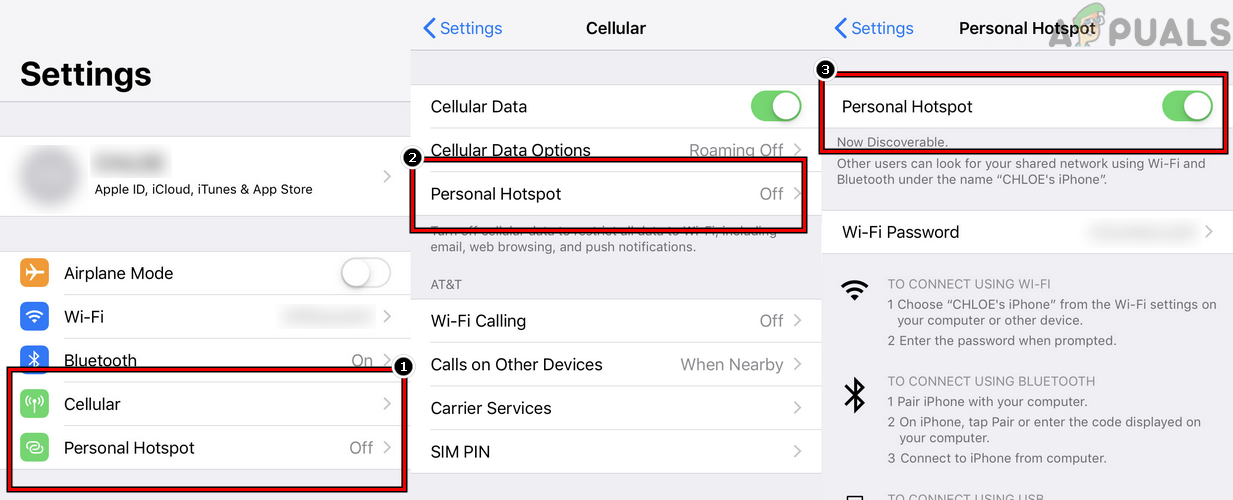
Enable Hotspot on the iPhone - Now launch the browser and steer to the problematic website to check if it is working fine.
- If not, download and install a VPN app on your device.
- Now launch the VPN app and connect to a preferred location (like the United States).
- Then relaunch the browser and check if the problematic website can be accessed without issue.
13. Disable or Uninstall the System’s Security Application
If your system’s security application (antivirus, firewall, antimalware, etc.) is interfering with your device’s communication with the problematic website, then that may cause the err_http2_protocol_error as the server may fail to parse the corrupt data requests from the client and sends the protocol error response. In such a case, disabling or uninstalling the system’s security application may clear the HTTP2 error. For illustration, we will discuss the process of disabling and uninstalling the ESET Internet Security on a Windows PC.
Warning:
Advance with utmost care and at your own risk as disabling or uninstalling the system’s security application can expose your browser, system, network, and data to external threats.
- Expand the hidden icons of the system tray and right-click on the ESET icon.
- Now select Pause Protection and then select the period for which (e.g., 10 minutes) you want to disable the ESET product.
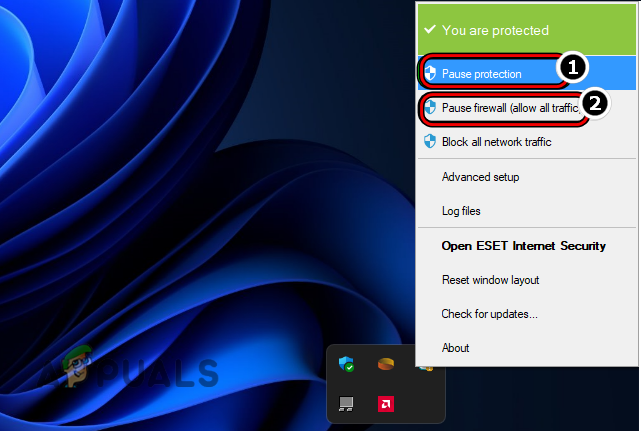
Pause ESET Protection and Firewall - Then click on Pauser Protection to pause the ESET protection.
- Again, right-click on ESET in the hidden icons of the system tray and select Pause Firewall.
- Then confirm to disable the ESET firewall and afterward, launch or relaunch the web browser.
- Now steer to the problematic website and check if it is opening fine.
- If so, then check if adding exceptions for the problematic website in the security product and enabling back the security application resolves the issue.
- If the issue persists after step 5 or 6, right-click Windows and open Apps & Features.
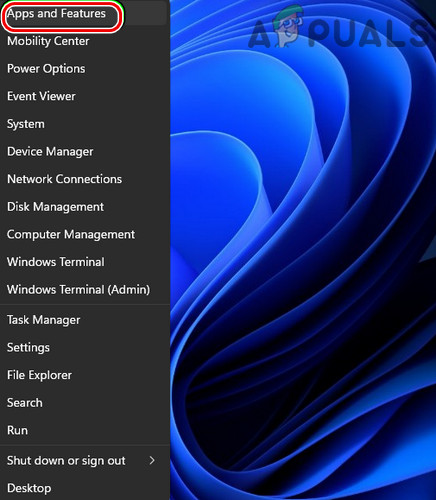
Open Apps & Features - Now, in the apps list, find ESET and expand its options.
- Then click on Uninstall and afterward, confirm to uninstall the ESET product.
- Now follow the prompts on the screen to complete the process and once uninstalled, restart your system.
- Upon restart, check if the err_http2_protocol_error is cleared.
- If so, then check if reinstalling the ESET product does not trigger back the HTTP2 error. If so, then you may contact the support of the security product to resolve the issue.
- If the above did not work and you are using a network firewall (like a Pi-hole), check if disabling the network firewall resolves the issue.
14. Disable Router’s Filtering
If your router has a built-in filtering mechanism to safeguard your network from threats, then that may break the communication between your device and the problematic website (especially, if the error gets cleared on another network). Here, disabling the router’s filtering may solve the problem. The process may vary but the general guidelines are as under:
- Launch a web browser and head to the management page of your router.
- Now log in using your credentials and then head to its Settings area.
- Then look for Security, Content Filter, Block Sites, URL Filters, Parental Controls, antimalware filtering, Firewall switch, etc.
- Once the relevant feature is found like Firewall Switch, then disable it by unchecking its checkbox.

Disable Router Firewall - Now save the changes and reboot your router.
- Upon reboot, check if the problematic website can be opened without triggering the protocol error at hand.
15. Reset Your Router to the Factory Defaults
If the firmware of the router is corrupt or a non-default setting is hindering the client/server communication, then that may cause the protocol error. In this context, resetting your router to the factory defaults may clear the HTTP2 issue. Before proceeding, make sure to note down the configurations by ISP to set up the router after resetting it to the factory defaults.
- Locate the physical reset button on your router (on the bottom or back of it) and then press/hold it for 30 seconds through a pointy object like a paperclip.
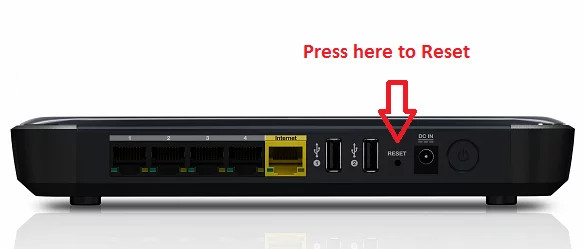
Reset Your Router - Now release the reset button and wait till the router properly powers on.
- Then use the ISP instructions to configure the router and afterward, check if the HTTP2 protocol issue is resolved.
16. Uninstall the Conflicting OS Update
If the protocol error has started to occur after a recent OS update, then the incompatibility of the update with your device can cause the problem as the data packets exchanged between client/server have become incompatible or corrupt. In such a case, uninstalling the conflicting OS update on your device may solve the problem. For illustration, we will discuss the process of uninstalling a Windows update on a PC.
- Right-click Windows and select Settings.

Open Windows Settings Through the Quick Access Menu - Now, in the left pane, head to the Windows Update tab, and then, in the right pane, open Update History.
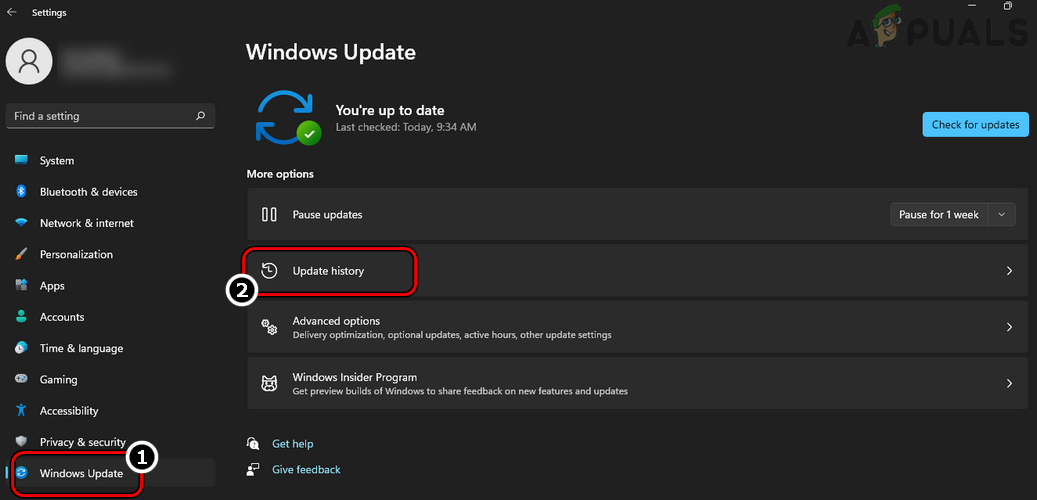
Open Update History of the Windows PC - Then, scroll down till the end and click on Uninstall Updates (under Related Settings).
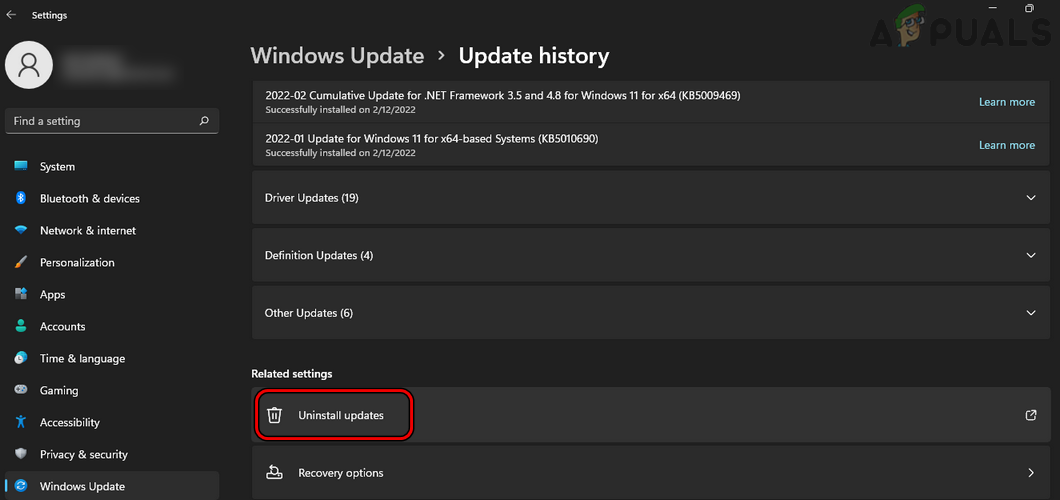
Open Uninstall Updates of Windows - Now, in the resulting window, select the latest update (you can check the Installed On column) and click on Uninstall.

Uninstall the latest Windows Update on Your System - Then follow the prompts on the screen to complete the update installation and once done, restart your system.
- Upon restart, check if the err_http2_protocol_error is cleared from the system. If so, then you may defer the problematic update installation (till the issue is reported to be resolved).
17. Disable HTTP2 Protocol on Your Device
If none of the above worked, then you may disable the HTTP2 protocol on your device (strictly not recommended) which may solve the problem but in some cases, it can create some unforeseen issues. For illustration, we will discuss the process for a Windows PC by editing the system’s registry.
Warning:
Proceed at your own risk as editing the registry of your PC is a skilled task; if not done properly, you may damage your OS, system, or data, or expose your system to threats.
- Click Windows and search for Registry Editor.
- Now right-click on its result and select Run as Administrator.
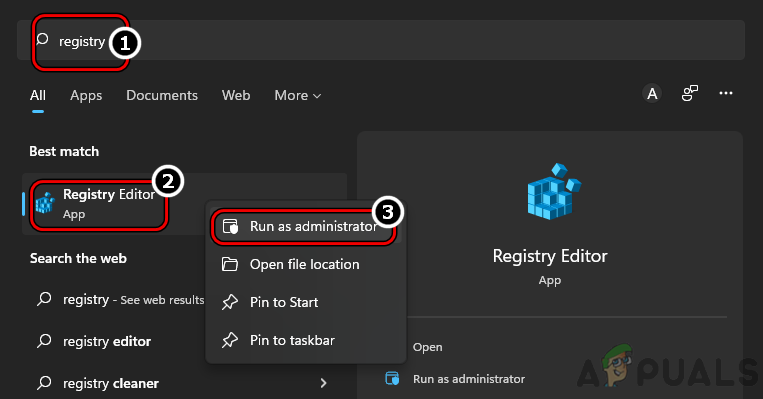
Open Registry Editor as Administrator - Then click Yes (if a UAC prompt is shown) and afterward, navigate to the following path:
HKEY_LOCAL_MACHINE\System\CurrentControlSet\Services\HTTP\Parameters
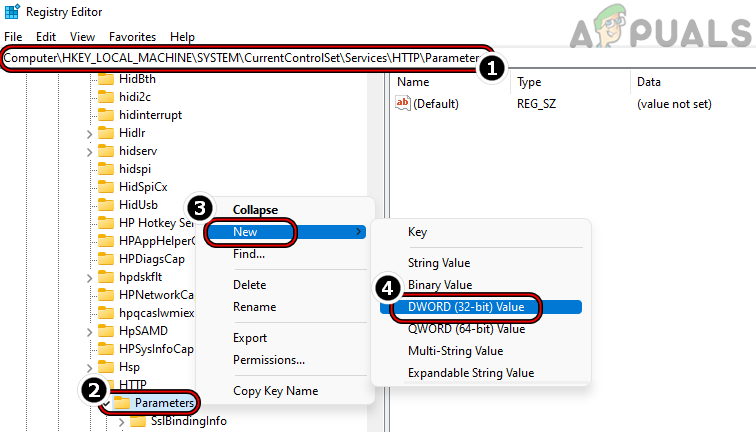
Create a New DWORD (32-bit) Value Under the Parameters Registry Key - Now, in the left pane, right-click on the Parameters key and select New>> DWORD (32-bit) Value.
- Then, in the right pane, name the key as EnableHttp2Tls and double-click on it.
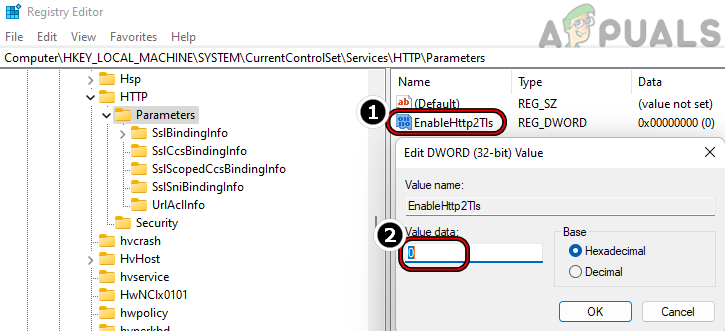
Name the New Value as EnableHttp2Tls and Set its Value to Zero - Now, set its value to 0 and create another DWORD (32-bit) value under the Parameters key.
- Then enter the name of the new value as EnableHttp2Cleartext and set its value to 0.
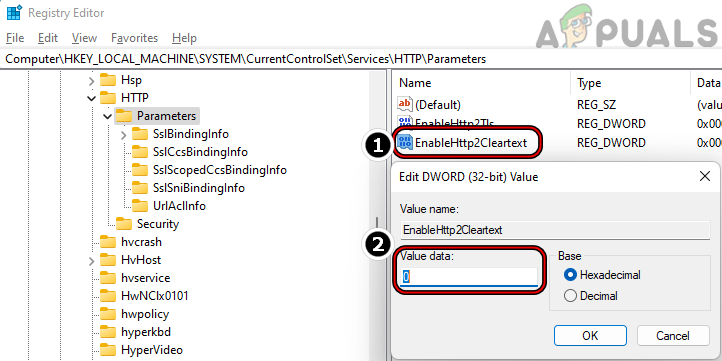
Create a New EnableHttp2Cleartext Value Under the Parameters Registry Key and Set its Value to Zero - Now close the registry editor and restart your Windows system.
- Upon restart, hopefully, the system will be cleared of the err_http2_protocol_error. If in the future you want to enable HTTP2 protocol on your device, simply delete the above two values from your system’s registry.
